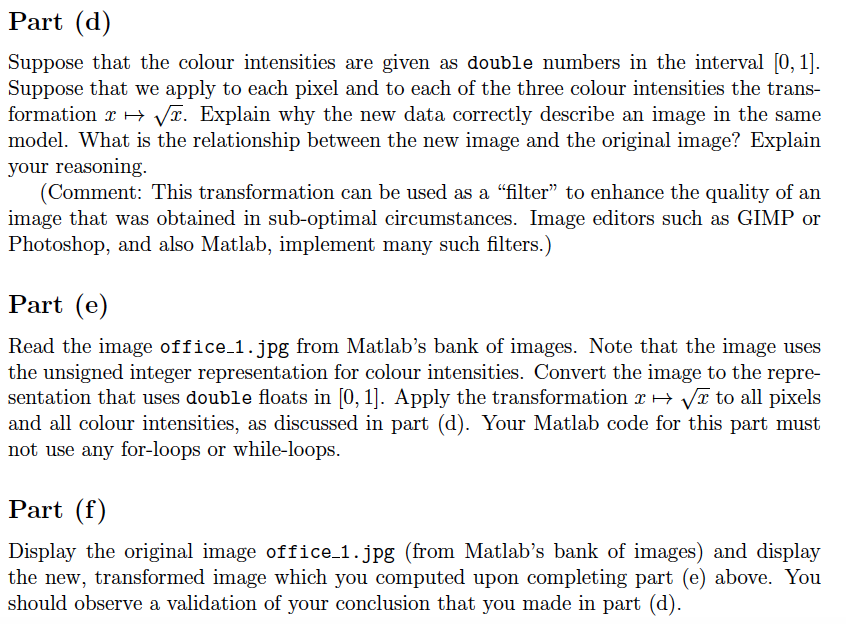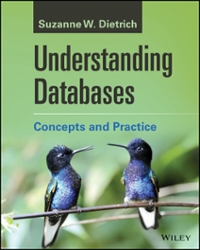
Part (d) Suppose that the colour intensities are given as double numbers in the interval [0, 1]. Suppose that we apply to each pixel and to each of the three colour intensities the trans- formation r H vr. Explain why the new data correctly describe an image in the same model. What is the relationship between the new image and the original image? Explain your reasoning. (Comment: This transformation can be used as a "filter" to enhance the quality of an image that was obtained in sub-optimal circumstances. Image editors such as GIMP or Photoshop, and also Matlab, implement many such filters.) Part (e) Read the image office_1.jpg from Matlab's bank of images. Note that the image uses the unsigned integer representation for colour intensities. Convert the image to the repre- sentation that uses double floats in [0, 1]. Apply the transformation r H a to all pixels and all colour intensities, as discussed in part (d). Your Matlab code for this part must not use any for-loops or while-loops. Part (f) Display the original image office_1.jpg (from Matlab's bank of images and display the new, transformed image which you computed upon completing part (e) above. You should observe a validation of your conclusion that you made in part (d). Part (d) Suppose that the colour intensities are given as double numbers in the interval [0, 1]. Suppose that we apply to each pixel and to each of the three colour intensities the trans- formation r H vr. Explain why the new data correctly describe an image in the same model. What is the relationship between the new image and the original image? Explain your reasoning. (Comment: This transformation can be used as a "filter" to enhance the quality of an image that was obtained in sub-optimal circumstances. Image editors such as GIMP or Photoshop, and also Matlab, implement many such filters.) Part (e) Read the image office_1.jpg from Matlab's bank of images. Note that the image uses the unsigned integer representation for colour intensities. Convert the image to the repre- sentation that uses double floats in [0, 1]. Apply the transformation r H a to all pixels and all colour intensities, as discussed in part (d). Your Matlab code for this part must not use any for-loops or while-loops. Part (f) Display the original image office_1.jpg (from Matlab's bank of images and display the new, transformed image which you computed upon completing part (e) above. You should observe a validation of your conclusion that you made in part (d)







